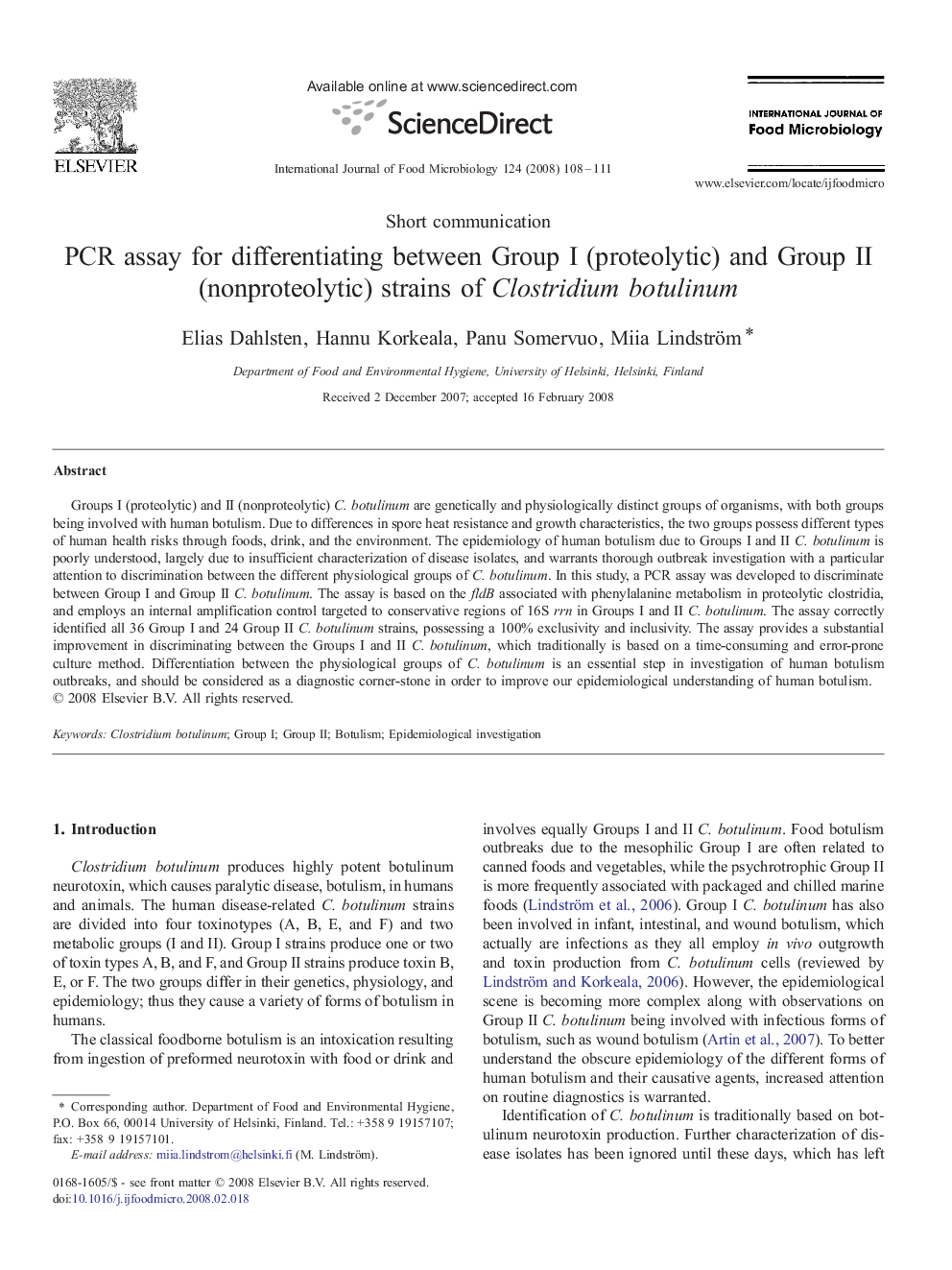| Article ID | Journal | Published Year | Pages | File Type |
|---|---|---|---|---|
| 4369198 | International Journal of Food Microbiology | 2008 | 4 Pages |
Groups I (proteolytic) and II (nonproteolytic) C. botulinum are genetically and physiologically distinct groups of organisms, with both groups being involved with human botulism. Due to differences in spore heat resistance and growth characteristics, the two groups possess different types of human health risks through foods, drink, and the environment. The epidemiology of human botulism due to Groups I and II C. botulinum is poorly understood, largely due to insufficient characterization of disease isolates, and warrants thorough outbreak investigation with a particular attention to discrimination between the different physiological groups of C. botulinum. In this study, a PCR assay was developed to discriminate between Group I and Group II C. botulinum. The assay is based on the fldB associated with phenylalanine metabolism in proteolytic clostridia, and employs an internal amplification control targeted to conservative regions of 16S rrn in Groups I and II C. botulinum. The assay correctly identified all 36 Group I and 24 Group II C. botulinum strains, possessing a 100% exclusivity and inclusivity. The assay provides a substantial improvement in discriminating between the Groups I and II C. botulinum, which traditionally is based on a time-consuming and error-prone culture method. Differentiation between the physiological groups of C. botulinum is an essential step in investigation of human botulism outbreaks, and should be considered as a diagnostic corner-stone in order to improve our epidemiological understanding of human botulism.
